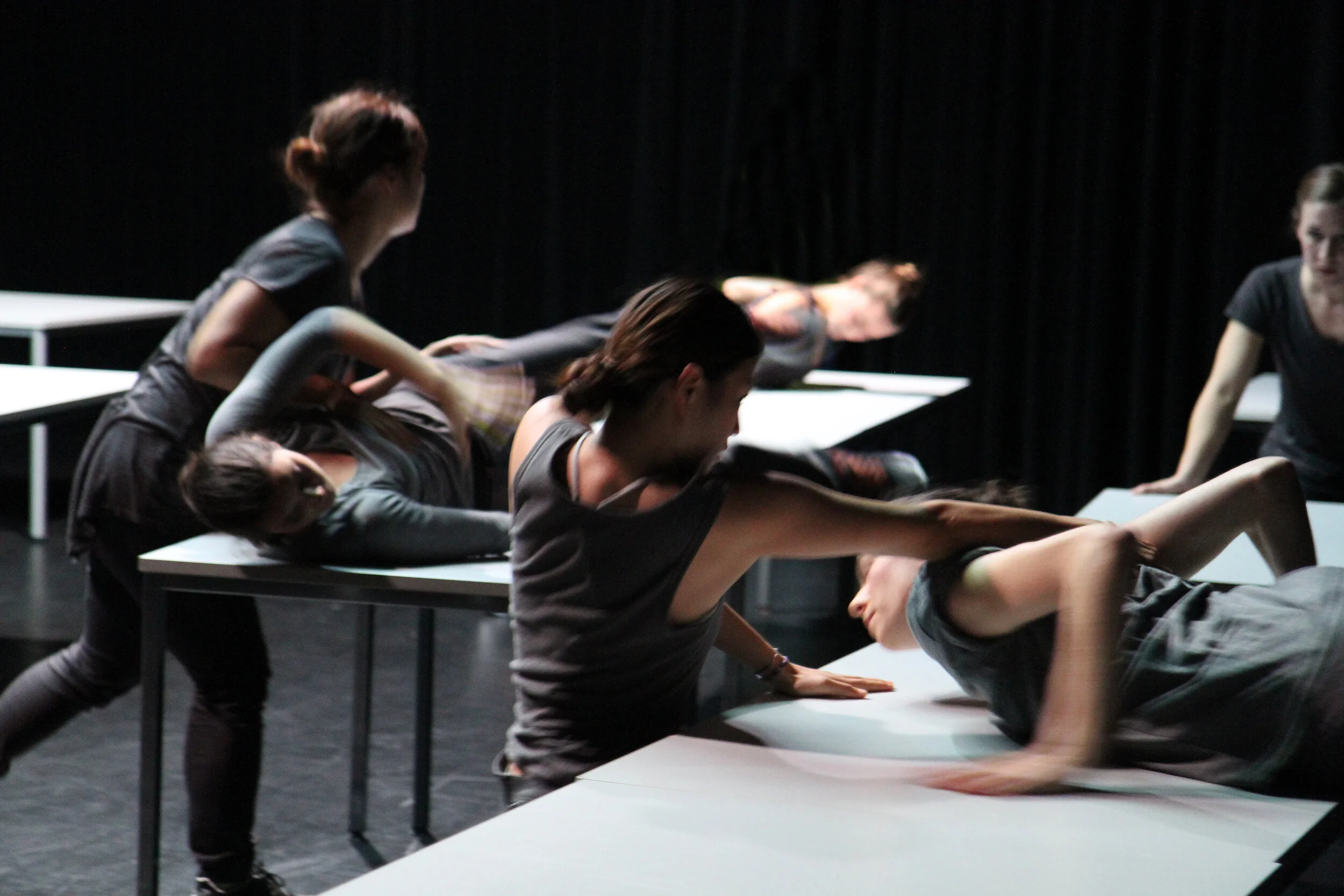Living Room
Norrdans
Härnösand, Sweden
It consists of live performance and interactive installation.
The first part of the show is a performance where dancers compose and construct the movement with lively captured images of themselves. All the captured images are modified using computer programming, and adding effects like delay, feedback, or edge detection creates a unique visual experience for the viewers.
The second part of the show is an interactive installation. The performance space opens up for the audience member to explore the same visual effect that appears in the performance.










